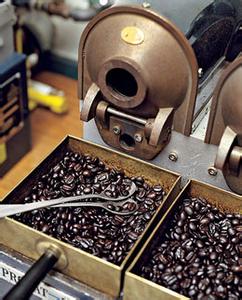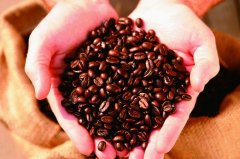Unveil the mystery of coffee roasting
What is coffee roasting?
Many people feel that coffee roasting (also known as frying) is very mysterious. In the words of Uncle Coffee beans in Haofang, coffee roasting is, in short, decoding the legendary story of a certain kind of coffee in the energy of fire. Raw beans that do not appear to have the color and taste of coffee contain fragrant substances that are so complex that they cannot be detected when they are not roasted. Basically, the roasting of coffee is a high-temperature coking dye, which completely changes the substance inside the raw bean, produces new compounds, and combines to form fragrance and mellow flavor. This kind of impregnation will only occur at high temperature, if only at a low temperature, it will not cause differentiation and infection, no matter how long it is roasted, the coffee beans are not cooked.

In Tokyo, micro-deep medium baking is more popular, but slowly also tends to deep baking.
Humans know that an Arabica coffee contains 700 to 850 aromatic substances, which Uncle Dou calls fragrant crater. Because the variety development situation includes soil, precipitation, planting premise, and even wind power and treatment methods, the fragrance of different coffee is different. The flavor of coffee is the most complex aromatic substance in the world. Lavender contains only 150 kinds of fragrant crater, but without baking, these fragrant crater can't be detected, it's just a code.
During the whole process of baking, the baker adjusts the degree of fire and time. Causes the coffee to undergo physical and chemical transformation. The first stage is the physical transformation, in which calories take away the moisture in the raw beans of coffee, and the color is also grayish green to light brown. The woody structure of raw coffee beans expands, and when you hear a crackling explosion, the coffee enters a chemical transformation, that is, the pyrolysis, the sugar is converted into caramel, and the flavor oil begins to form.
The relationship between coffee roasting and coffee flavor
Those who like coffee have their own delight in the flavor of coffee. Let's see what's in the coffee cup. Caramelized sugar, flavored oils and other substances and about 1% caffeine make up a cup of coffee. The flavor oil chooses the flavor of a cup of coffee. Coffee roasting is to pyrolyze the aromatic substances in raw coffee beans into aromatic oils under the influence of energy. This is the full focus of baking. If there is no flavor oil in the coffee, stir-frying coffee and stir-frying old corn are the same thing.
People all over the world have a strong and unified love for flavor, forming unique group needs, such as New York, where most people prefer urban baking, but because the city is inhabited by all kinds of different races, therefore, it also sells all kinds of coffee beans with different roasting levels, and the transformation is also quite rich.
Guatemala Antigua coffee beans seem to retain their sour taste and bad water taste when they are deeply roasted, which is hard for other coffees. Sumatran coffee beans usually have plump grains, but they are lower than medium acidity. When they are roasted deeper, they will disappear to acidity and easily become sugar paste.
The level of coffee roasting
An explosion is very important for coffee roasting, and many friends ask me when to stop roasting. I said that as long as the coffee goes into pyrolysis, roasting can be stopped at any time. It depends on the individual's understanding of coffee and the requirements of the mouth and stomach. We say that 700 to 850 aromatic substances are locked in the raw bean in the form of a password. Well, this decoding will start after a big explosion. Coffee roasting is to use the words of fire to interpret the legendary story hidden in the raw beans of coffee.
Important Notice :
前街咖啡 FrontStreet Coffee has moved to new addredd:
FrontStreet Coffee Address: 315,Donghua East Road,GuangZhou
Tel:020 38364473
- Prev

Coffee futures American type C futures Arabica coffee bean price trend quotation contract latest news
The American coffee bean futures business began with the New York Coffee Business in 1882, which added sugar futures contracts in 1916 and changed its name to New York Coffee and Sugar Trading. It was not until 1979 when it merged with the New York cocoa business that it became known to the giants as the New York coffee, sugar and cocoa business.
- Next

Baking basis of hand net
Do-it-yourself, the greatest benefit of roasting coffee beans directly with a hand net is low cost and novelty, even if it is not guaranteed to be very average. In addition, the free adjustment of firepower to facilitate the observation of the color change of beans is also one of the reasons why happy coffee lovers are keen on this method.
Related
- Beginners will see the "Coffee pull flower" guide!
- What is the difference between ice blog purified milk and ordinary milk coffee?
- Why is the Philippines the largest producer of crops in Liberia?
- For coffee extraction, should the fine powder be retained?
- How does extracted espresso fill pressed powder? How much strength does it take to press the powder?
- How to make jasmine cold extract coffee? Is the jasmine + latte good?
- Will this little toy really make the coffee taste better? How does Lily Drip affect coffee extraction?
- Will the action of slapping the filter cup also affect coffee extraction?
- What's the difference between powder-to-water ratio and powder-to-liquid ratio?
- What is the Ethiopian local species? What does it have to do with Heirloom native species?

